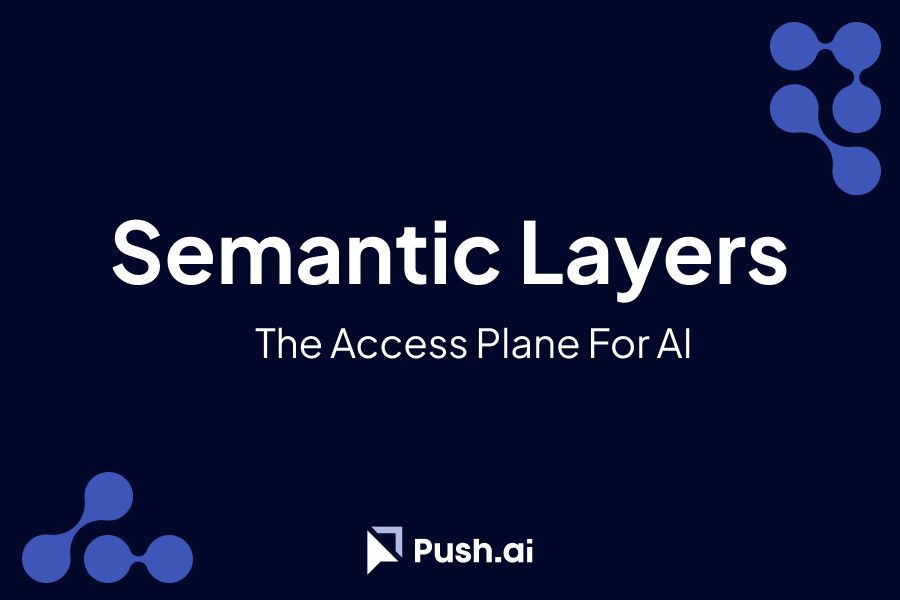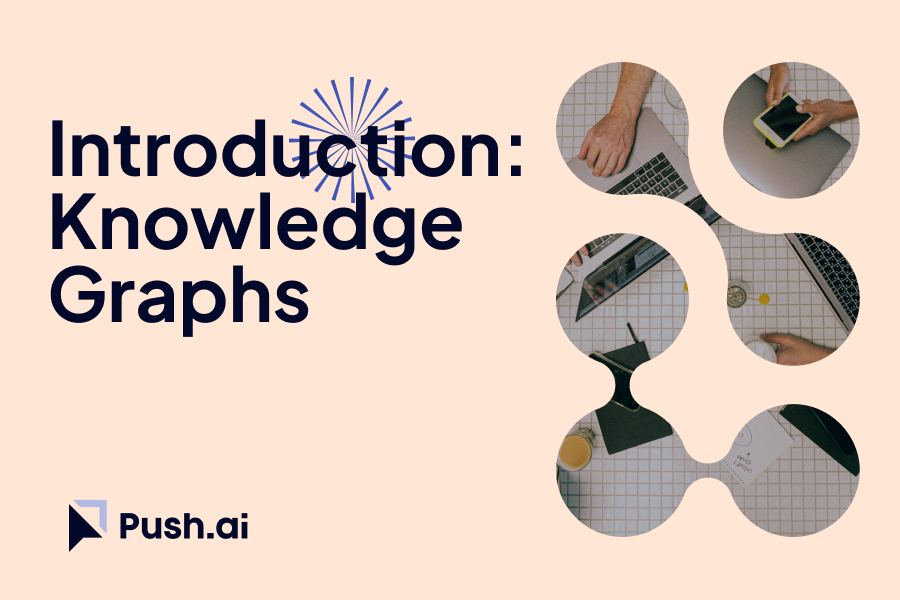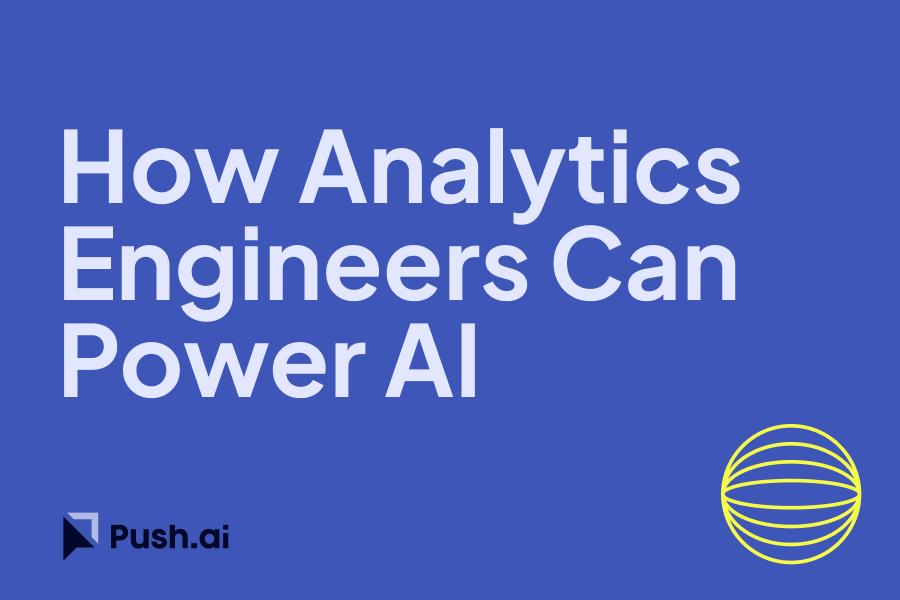In the past decade of being a data practitioner, I have witnessed a tremendous evolution in the tools and technologies available to us. The acceleration has been particularly exponential in the last couple of years, driven by the AI revolution that has made data the focal point of innovation and excitement. The integration of artificial intelligence (AI), application development platforms, task and script automation tools, and semantic layers has transformed how the best teams approach data analytics. These advancements have not only simplified complex data processes but have also empowered analysts to create powerful, interactive, and highly valuable data products. This blog aims to share insights and tools that can help data analysts transcend traditional roles, enabling them to deliver substantial value to their organizations. Whether you're looking to enhance your business intelligence capabilities, augment data workflows, or ensure consistency and governance, this guide will provide you with the knowledge to level up quickly and drive impactful business outcomes.
AI Functions in Modern Data Warehouses
In today's rapidly evolving data landscape, the capabilities available to data analysts have expanded exponentially. Modern data warehouses now offer powerful AI functions that allow analysts to build, deploy, and manage machine learning models directly within their familiar environments. This section highlights how platforms like Snowflake Cortex, Databricks, and Google BigQuery ML are revolutionizing data analytics and enabling analysts to extract deeper insights with minimal effort.
Here are some example use-cases and code
Text Classification Tools using Common Data Warehouses
Snowflake Cortex
Snowflake’s Cortex is a prime example of AI seamlessly integrated into a data platform. It allows analysts to build and deploy machine learning models directly within Snowflake, using familiar SQL queries. This means analysts can perform advanced analytics without needing to switch between multiple tools or platforms. By embedding AI into their workflows, analysts can gain deeper insights from their data and streamline their analytical processes.
For more examples using specific functions, here are a couple of pages that may be interesting:
Snowflake Cortex Use-Cases and Tools
Leveraging Snowflake Cortex COMPLETE Function for Prompt Engineering
Leveraging Snowflake Cortex for Advanced AI and ML: New Functionalities for Analytics Teams
Creating and Using Custom Models in Snowflake
Databricks and AI
Databricks provides robust support for AI and machine learning, making it easier for analysts to leverage these technologies. With Databricks, analysts can create and manage ML models, automate workflows, and integrate these models into their data pipelines. The platform’s integration with popular frameworks like TensorFlow and PyTorch, along with its collaborative workspace, simplifies the process of developing and deploying AI-driven insights.
If you’re curious for more Databricks and AI content, here’s a few introductory articles to learn more:
Recent AI/ML Function Types in Databricks to Help Analysts Level Up
Unlocking Advanced Data Analysis with Databricks' Latest Tools
Supercharging Machine Learning with Databricks Runtime for Machine Learning
Google BigQuery ML and GCP
Google’s BigQuery ML allows analysts to build and execute machine learning models using standard SQL queries. This integration means that analysts can create sophisticated models without extensive programming knowledge. BigQuery ML supports various types of models, including linear regression, k-means clustering, and more, enabling analysts to incorporate machine learning directly into their data queries and business intelligence tools.
Enhancing Data Analysis with Google BigQuery's AI/ML Functions
Integrating Vertex AI with Google BigQuery for Continuous Image Analysis
AI for General Databases
Other databases, such as PostgreSQL and traditional SQL databases, can also be augmented with AI and machine learning functionalities through hosted Python scripts and application tools. This approach allows analysts to extend the capabilities of these databases without needing extensive engineering support, enabling them to perform advanced text and image analysis.
Here’s some explainers for using Python and Postgres to help get you started
Using LLMs with Python, Jupyter and PostgreSQL
Steps to Implement Image Classification with PostgreSQL
Integrating AI into Existing Tools
Integrating AI into existing data tools enhances the capabilities of analysts, enabling them to perform advanced analytics without extensive programming knowledge. Modern BI tools, SQL interfaces, and data transformation layers now embed AI functions, allowing for predictive analytics, enriched data workflows, and the democratization of machine learning insights across organizations. This section explores how to leverage AI within business intelligence tools like Tableau and Power BI, embed AI functions in SQL queries using Snowflake and Databricks, and integrate AI into transformation layers with tools like dbt.
Business Intelligence Tools
Modern BI tools like Tableau and Power BI are increasingly integrating AI capabilities. By connecting these tools with AI-embedded platforms like Snowflake and Databricks, analysts can enhance their visualizations and dashboards with predictive analytics and advanced analysis. This integration helps organizations make data-driven decisions faster and more accurately.
Example with Snowflake and Tableau:
Integrate Tableau with Snowflake to use predictive models directly within your dashboards:
-- Creating a predictive model in Snowflake
CREATE OR REPLACE MODEL sales_model
PREDICTING sales
USING
SELECT
total_spent,
num_items,
customer_age,
customer_income,
sales
FROM
sales_data;
-- Using this model in Tableau via SQL
SELECT
total_spent,
num_items,
customer_age,
customer_income,
PREDICT(sales_model, total_spent, num_items, customer_age, customer_income) AS predicted_sales
FROM
new_sales_data;
SQL Queries and Data Sharing
AI functions embedded in SQL interfaces allow analysts to perform complex analyses within their existing workflows. For instance, using Databricks, analysts can embed machine learning models directly into their queries, making it easier to share AI-driven insights across the organization. This approach democratizes access to advanced analytics, enabling more team members to benefit from AI.
Example with Databricks:
# Training a model in Databricks
from pyspark.ml.regression import LinearRegression
# Load training data
data = spark.read.format("libsvm").load("/path/to/data")
# Create and train model
lr = LinearRegression(maxIter=10, regParam=0.3, elasticNetParam=0.8)
lr_model = lr.fit(data)
# Save the model
lr_model.write().overwrite().save("/path/to/save/model")
# Using the model in SQL
spark.sql("""
SELECT
total_spent,
num_items,
customer_age,
customer_income,
PREDICT(lr_model, total_spent, num_items, customer_age, customer_income) AS predicted_sales
FROM
new_sales_data
""")
Transformation Layers with dbt
Data transformation tools like dbt (data build tool) have inherited AI support because of the integration of AI and machine learning models into the data warehouses where dbt is traditionally run. By embedding AI functions into dbt models, analysts can transform and enrich their data in new ways. This is particularly valuable for processing unstructured data, such as text or images, which traditional systems struggled to handle. With AI, analysts can now synthesize and analyze these data types more effectively, uncovering insights that were previously out of reach.
Example with dbt and Snowflake:
Use Snowflake's built-in text analysis functions to perform sentiment analysis or text classification within a dbt model.
-- dbt model (my_model.sql)
WITH sentiment_analysis AS (
SELECT
id,
text,
SENTIMENT(text) AS sentiment_score
FROM
source_table
)
SELECT
st.id,
st.text,
sa.sentiment_score
FROM
source_table st
LEFT JOIN
sentiment_analysis sa ON st.id = sa.id;
By integrating AI functions into these tools, data analysts can enhance their workflows and derive deeper insights from their data. These examples demonstrate how to leverage AI capabilities within existing tools and platforms, enabling more sophisticated and impactful data analysis.
Hosted Script Providers for Data Engineering Tasks
Leveraging hosted scripts allows data analysts to run custom Python scripts without needing extensive data engineering expertise. These platforms simplify the integration of APIs and custom code, enabling data augmentation and enrichment tasks seamlessly. Here are some key providers:
Pipedream
Pipedream is a powerful platform for connecting APIs and running custom workflows. It supports a wide range of integrations and allows you to run custom Python code in response to various triggers. Automating data workflows, integrating third-party APIs, and running custom scripts for data processing and augmentation.
Google Cloud Functions
Google Cloud Functions is a serverless execution environment for building and connecting cloud services. It allows you to run code in response to events and integrates seamlessly with other Google Cloud services. You can use Google cloud functions for real-time data processing, triggering workflows based on changes in BigQuery, and integrating with Google Maps for geocoding addresses.
AWS Lambda
AWS Lambda is a serverless compute service that lets you run code without provisioning or managing servers. It can be triggered by various AWS services or HTTP requests. You can use AWS lambda for data transformation tasks, invoking third-party APIs for data enrichment, and automating data pipelines.
Azure Functions
Azure Functions is a serverless compute service that enables you to run event-driven code without having to manage infrastructure. It integrates well with other Azure services. Use Azure functions for automating data workflows, integrating with Azure services for data processing, and calling APIs for data augmentation.
Zapier
Zapier is an automation tool that connects your apps and services. It allows you to automate tasks by creating workflows called “Zaps” that can include custom Python code. Zapier is a very common tool for operations heavy teams and can allow data teams to help increase the flow of information across systems, automating and improving the quality of their company’s tasks. You can use it for integrating various SaaS applications, automating repetitive tasks, and running custom code for specific data processing needs.
Integromat (Make)
Integromat, now known as Make, is an integration platform that allows you to connect apps and automate workflows. It supports custom scripting for more advanced automation needs. Use Integromat for automating data flows between different systems, enriching data with external APIs, and running custom scripts for data manipulation.
These platforms provide flexible solutions for running custom Python scripts and integrating various APIs into your data workflows. By leveraging these tools, data analysts can perform complex data augmentation tasks without the need for a full-time data engineer, enhancing their ability to derive insights and add value to their data analysis processes.
Creating Data Applications
The rise of new application-building software has enabled data analysts to go beyond traditional dashboards and create more customized, interactive experiences for users.
Retool
Retool is a powerful platform that allows analysts to quickly build internal tools and applications. With its drag-and-drop interface and integrations with various data sources, analysts can create read-write applications that provide a more dynamic and interactive user experience. This shift enables analysts to move from simply presenting data to actively engaging users with tailored applications that can drive more significant insights and actions.
Integrating Vertex AI with Google BigQuery for Continuous Image Analysis in Retool
Streamlit
Streamlit is another tool that has revolutionized how analysts can build applications. It allows analysts to create custom web applications for data science projects with minimal coding. Streamlit applications can be used to prototype new ideas, share insights interactively, and even deploy machine learning models in a user-friendly interface. This capability turns data analysts into product creators, enabling them to offer highly valuable tools to their organizations.
Integrating Vertex AI with Google BigQuery for Continuous Image Analysis in a Streamlit Application
Modeling Your Business for AI - Semantic Layers
Semantic layers are a powerful tool for ensuring consistency and accuracy in data analysis. They provide a validated definition layer that standardizes metrics and dimensions across an organization, enabling reliable and consistent insights. By modeling the business through a semantic layer, data analysts and AI tools can work with a unified view of data, ensuring that all analyses are based on the same definitions and logic.
Using Semantic Layers as an Interface for AI
Semantic layers act as an interface for AI, allowing custom AI tools or native tools like Push.ai to produce reliable numbers and insights. Here's how:
- Consistency Across Tools: By defining business metrics and dimensions in the semantic layer, all AI tools access the same validated definitions, ensuring consistency in reporting and analysis.
- Simplified Data Access: AI tools can interact with the semantic layer to retrieve data, simplifying the process of data extraction and reducing the complexity of data preparation.
- Enhanced Trust in Data: With a semantic layer, users can trust that the numbers and insights produced by AI tools are accurate and based on consistent definitions, reducing discrepancies and improving decision-making.
Push.ai and Semantic Layers
Push.ai, a tool that leverages the semantic layer, can provide accurate and reliable AI-driven insights by interacting with the semantic layer. Here’s how:
- Define Metrics and Dimensions: In the semantic layer, define key business metrics such as revenue, customer churn, and product performance.
- Integrate AI Tools: Configure Push.ai to use the semantic layer for data access. Push.ai queries the semantic layer to retrieve consistent and validated data.
- Produce Insights: Push.ai analyzes the data, leveraging AI models to provide insights such as sales forecasts, customer segmentation, and anomaly detection, all based on the consistent definitions provided by the semantic layer.
Benefits
- Unified Data View: Ensures all AI tools and analysts work from a single, unified view of the business data.
- Reduced Data Silos: Breaks down data silos by providing a common layer that all tools and users can access.
- Improved Decision-Making: Enhances decision-making by ensuring all insights are based on accurate and consistent data.
Providers for Semantic Layers
Here are some leading providers that help organizations model their business effectively through semantic layers:
Cube
Description: Cube offers a headless BI platform with a consistent and secure semantic layer for metrics and data models. It connects to data sources, transforms the data, and makes it accessible through APIs for BI tools and applications. Cube ensures that all data interactions are based on a single source of truth, enhancing data governance and reliability.
Website: Cube
dbt Cloud Semantic Layer
Description: dbt is a powerful transformation tool that enables data analysts and engineers to transform data within their warehouses more effectively. The latest version of the dbt Semantic Layer allows organizations to centrally define business metrics, ensuring consistent and reliable metrics across various data platforms and tools. With integrations with tools like Tableau, Google Sheets, and Push.ai, dbt facilitates seamless access to accurate data metrics.
Website: dbt
AtScale
Description: AtScale provides an adaptive analytics platform that enables enterprises to create a universal semantic layer. It supports dynamic and interactive queries, delivering consistent metrics and KPIs across BI tools. AtScale's platform is designed to integrate seamlessly with existing data architectures, providing a scalable solution for data analytics and AI.
Website: AtScale
Integrating AI with a semantic layer transforms how organizations interact with data, providing a reliable and consistent foundation for advanced analytics. By leveraging the semantic layer, tools like Push.ai can produce accurate and validated insights, empowering data analysts to drive significant business outcomes. This approach not only simplifies data access and analysis but also ensures that all users and tools are aligned on the same definitions and metrics, fostering trust and enhancing decision-making across the organization.
Producing High-Value AI + Data Products
With these new tools, data analysts can now produce AI products that deliver substantial value to their organizations. By leveraging new platforms, analysts can:
- Develop Interactive Applications: Create applications that provide users with real-time access to data and insights, transforming how teams interact with data.
- Enhance User Experiences: Build customized experiences that meet the specific needs of different user groups, from executives to operational teams.
- Drive Internal and External Value: Turn data insights into internal services that improve efficiency or into external products that can generate new revenue streams.
- Perform Data Engineering Tasks: Utilize hosted scripts and services like Pipedream, Google Cloud Functions, and AWS Lambda to automate data augmentation tasks. This can include enriching datasets with external APIs like Google Maps for address geocoding, ensuring that analysts can handle complex data workflows without needing extensive data engineering support.
- Leverage Advanced AI Functions: Use AI functions integrated within platforms like Snowflake Cortex, Databricks, and BigQuery ML to perform sophisticated analyses. This includes predictive modeling, sentiment analysis, and text classification directly within SQL queries, enhancing the depth and breadth of insights derived from data.
- Utilize Application Building Software: Platforms like Retool and Streamlit enable analysts to build custom, interactive data applications. These tools allow for the creation of tailored user experiences, facilitating better data interaction and decision-making processes across different levels of an organization.
These capabilities position analysts to take on roles similar to product managers, where they can package data into powerful systems that drive significant business outcomes. As a result, analysts are no longer just data interpreters but are becoming key players in developing strategic AI products that can revolutionize their organizations.
Conclusion
The rapid evolution of AI technologies and application-building tools has significantly lowered the barriers for data analysts to incorporate advanced analytics into their workflows. By leveraging tools like Snowflake Cortex, Databricks, BigQuery ML, Retool, and Streamlit, analysts can quickly stand up initial prototypes or full use cases with minimal effort. These integrations not only enhance the capabilities of traditional BI tools and SQL queries but also enable the creation of sophisticated applications that drive significant value. As AI continues to evolve, the opportunities for data analysts to drive value within their organizations will only grow, making now the perfect time to start exploring these powerful tools.
With the ability to develop interactive applications, enhance user experiences, drive both internal and external value, perform advanced data engineering tasks, and leverage powerful AI functions, data analysts are uniquely positioned to build powerful data products. These tools empower analysts to harness advanced techniques, transforming raw data into strategic assets and revolutionizing their roles within organizations.


%201.svg)







